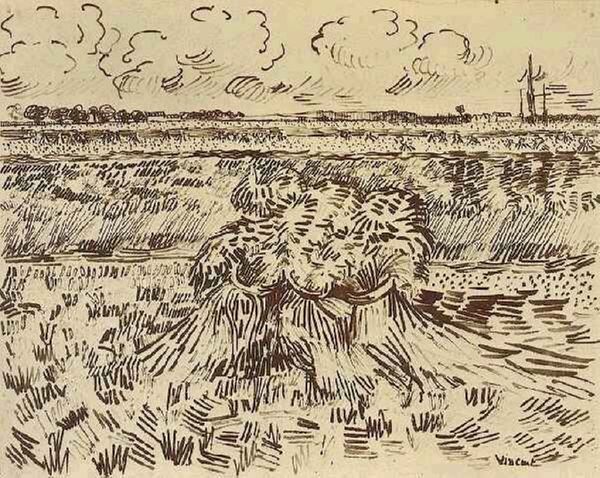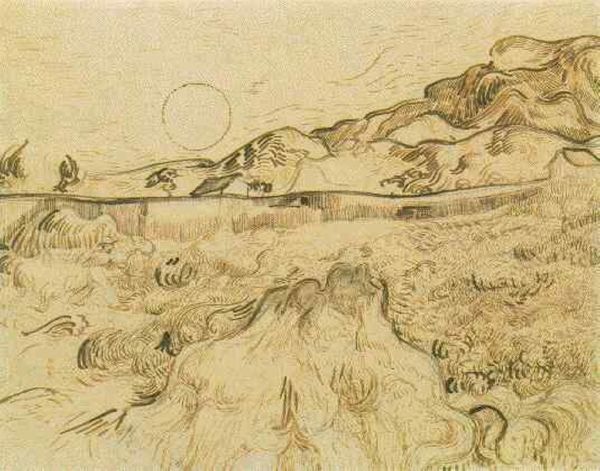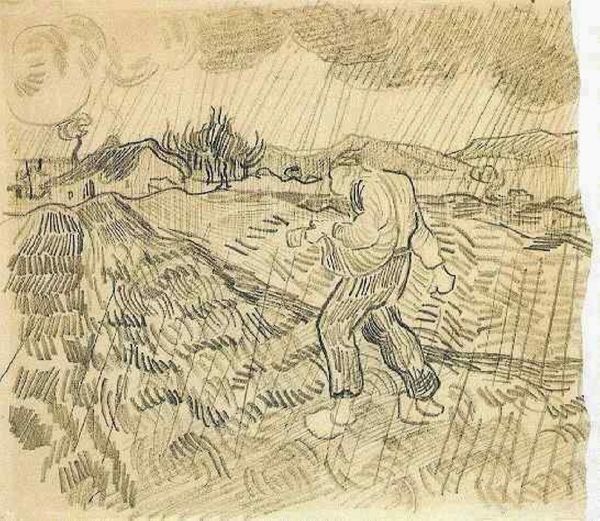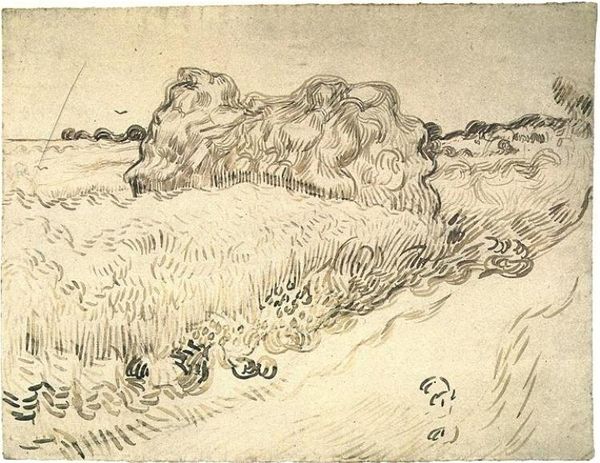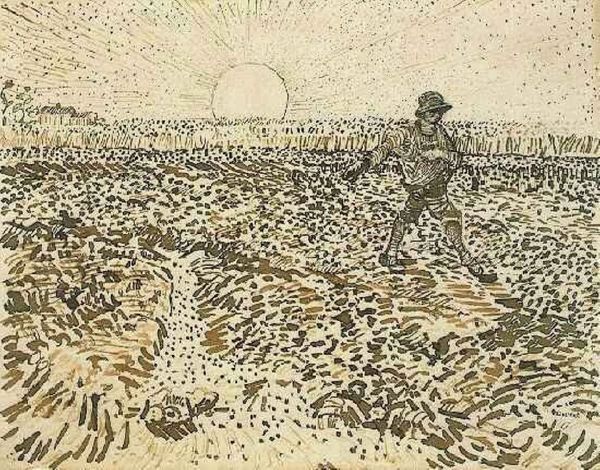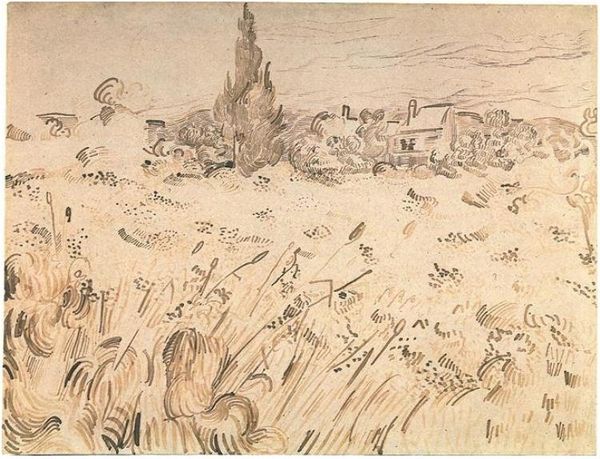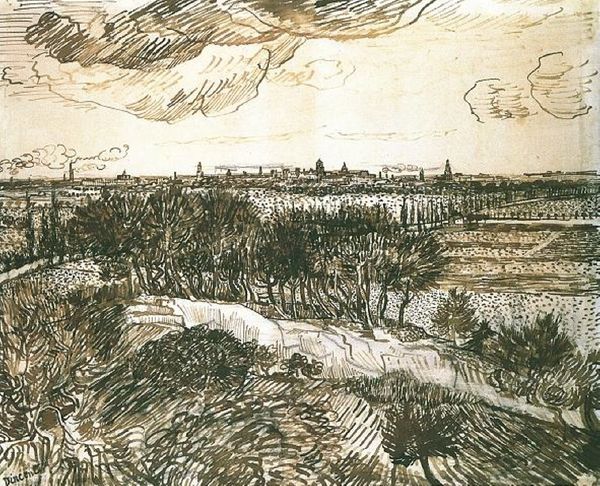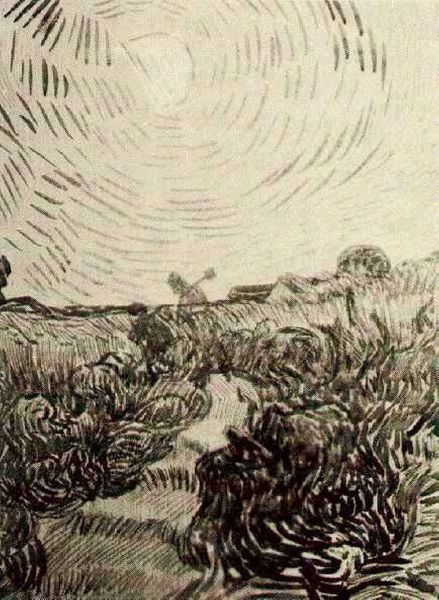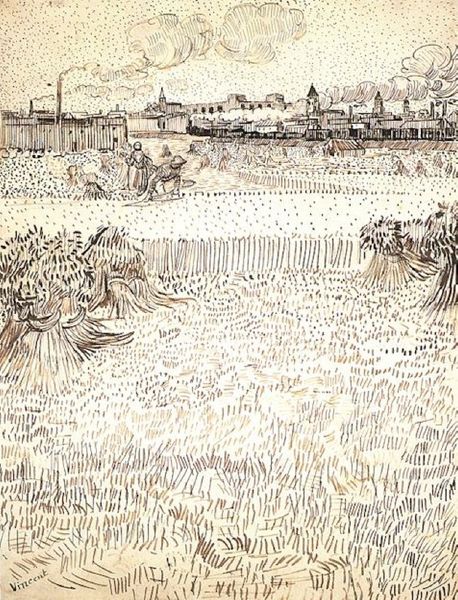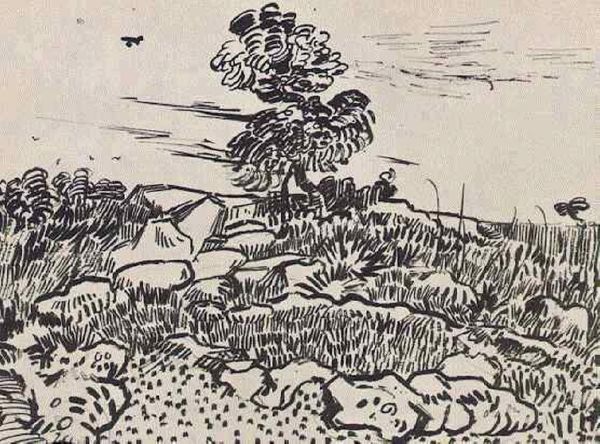
drawing, pencil
#
drawing
#
organic
#
grass
#
landscape
#
possibly oil pastel
#
organic pattern
#
pencil
#
post-impressionism
Copyright: Public domain
Curator: So, here we have Vincent van Gogh’s "Wheat Field with Sheaves" from 1888. He made it while in Arles, during his intensely productive period in the south of France. Editor: My first impression is almost textural – I want to run my hands across that dense weave of lines. It's monochromatic, dominated by these earthy browns and tans, and yet it’s vibrating with a silent energy, don’t you think? Curator: Absolutely! Look closely. Van Gogh creates such a strong impression of light and shadow through the sheer density and direction of his mark-making, of pencil strokes on the paper. He was endlessly fascinated by fields—by wheat in particular—a motif that offered so much symbolic weight for him. Editor: Yes, and speaking of wheat… let’s think about what we're actually seeing here. This is about labor, the harvesting of sustenance, and a clear intersection with materiality. Fields signify not only beauty but the economic backbone of a community and a person’s interaction with the material world around them. Van Gogh wasn’t just drawing pretty pictures; he was engaging with complex ideas about land use and the process of production. Curator: Very true. Van Gogh certainly felt a deep connection to the peasant class, identifying with their connection to the earth and seeing an inherent nobility in their work. And I see those rhythmic, curving lines describing the sheaves of wheat as almost portraits—each bundle individualized. I mean, imagine the repetitive motion of a farmer binding each one. Editor: And think about the market for works like this, created with the sale of inexpensive drawing implements: How it creates access, and even the art world is stratified along lines of material comfort. So many associations ripple outward, just from considering his approach! Curator: Exactly! It's a reminder that art, even something as seemingly simple as a quick sketch, is never really simple at all. Van Gogh’s wheat field is not merely a depiction of rural life but a deeply felt exploration of his own relationship to the world and the working person’s place in it. Editor: In a way, his obsessive rendering transforms those ordinary materials into an enduring mirror, reflecting society and ourselves.
Comments
No comments
Be the first to comment and join the conversation on the ultimate creative platform.
